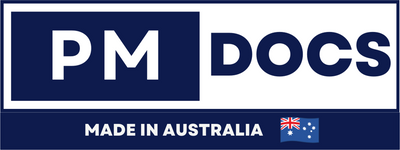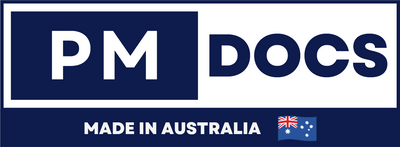NIST CSF 2.0 Toolkit: Everything Australian Companies Need To Know
Introduction
In today's digital landscape, cybersecurity is more crucial than ever. Businesses, especially in Australia, must navigate complex networks and safeguard their data against ever-evolving threats. The National Institute of Standards and Technology (NIST) Cybersecurity Framework (CSF) 2.0 offers a structured approach to help organizations manage and reduce cybersecurity risks.

Understanding NIST CSF 2.0
What is NIST CSF 2.0?
The NIST Cybersecurity Framework 2.0 is an updated version of the original framework introduced in 2014. It provides a policy framework of computer security guidance for how private sector organizations can assess and improve their ability to prevent, detect, and respond to cyber attacks.
While originally developed for critical infrastructure sectors, its principles apply universally, offering a flexible and cost-effective approach to managing cybersecurity risks.
Key Components Of NIST CSF 2.0
NIST CSF 2.0 is organized into three main components: the Core, the Implementation Tiers, and the Profiles.
- The Core: This component consists of five high-level functions: Identify, Protect, Detect, Respond, and Recover. Each function is further divided into categories and subcategories outlining specific cybersecurity outcomes.
- Implementation Tiers: These tiers describe an organization's approach to managing cybersecurity risk and the degree to which it integrates cybersecurity risk management practices into its overall risk management.
- Profiles: Profiles help organizations align their cybersecurity activities with business requirements, risk tolerance, and resources.
Benefits Of NIST CSF 2.0 For Australian Businesses
1. Enhanced Cybersecurity Posture
Implementing NIST CSF 2.0 helps businesses enhance their cybersecurity posture. By following its guidelines, organizations can create a robust cybersecurity program that protects against threats while being adaptable to new risks.
2. Improved Risk Management
The framework emphasizes risk management as a core principle. Businesses can identify potential cybersecurity risks and implement strategies to mitigate them. This proactive approach minimizes the likelihood of cyber incidents and reduces potential damages.
3. Facilitates Compliance
NIST compliance is crucial for businesses that want to adhere to regulatory standards. By aligning with the NIST CSF 2.0, Australian businesses can demonstrate their commitment to cybersecurity best practices, which can be beneficial for both regulatory and customer trust purposes.
4. Cost-Effective Cybersecurity Solutions
The NIST CSF 2.0 offers a flexible, cost-effective approach to cybersecurity. Businesses can tailor the framework to their specific needs and resources, allowing them to optimize their cybersecurity investments without overspending.
Implementing NIST CSF 2.0 In Your Business
Step 1: Assess Your Current Cybersecurity Posture
Begin by evaluating your current cybersecurity measures. Identify strengths and weaknesses in your existing framework. This assessment will help you understand where improvements are needed and how the NIST CSF 2.0 can be integrated into your operations.
Step 2: Develop a Target Profile
Create a target profile that reflects your desired cybersecurity outcomes. This profile should align with your business objectives, risk tolerance, and available resources. Use this profile as a roadmap to guide your implementation of the NIST CSF 2.0.
Step 3: Implement the Framework
Once you have a clear understanding of your current state and target profile, implement the NIST CSF 2.0 across your organization. This involves integrating its core functions—Identify, Protect, Detect, Respond, and Recover—into your cybersecurity practices.
Step 4: Monitor and Improve
Cybersecurity is an ongoing process. Regularly monitor your cybersecurity posture and make improvements as needed. The NIST CSF 2.0 encourages continuous improvement, ensuring your business remains resilient against emerging threats.
Real-World Applications Of NIST CSF 2.0
1. Case Study: Australian Financial Services
An Australian financial services company implemented the NIST CSF 2.0 to enhance its cybersecurity measures. By focusing on the framework's core functions, the company improved its ability to identify and respond to potential threats. The result was a more secure environment for both the company and its clients, leading to increased trust and business growth.
2. Case Study: Australian Healthcare Provider
A healthcare provider in Australia adopted the NIST CSF 2.0 to protect sensitive patient data. The framework helped the organization establish robust security protocols, reducing the risk of data breaches. As a result, the provider maintained compliance with health information regulations and safeguarded patient trust.
NIST CSF 2.0 Toolkit
To assist businesses in implementing the NIST CSF 2.0, a comprehensive toolkit is available. This toolkit includes resources such as self-assessment guides, implementation templates, and best practice guidelines. By leveraging these tools, Australian businesses can streamline their adoption of the framework and enhance their cybersecurity measures.
Conclusion
The NIST CSF 2.0 is an invaluable resource for Australian businesses seeking to strengthen their cybersecurity posture. By understanding its components and benefits, organizations can implement effective cybersecurity strategies tailored to their unique needs. As cyber threats continue to evolve, the NIST CSF 2.0 provides a robust foundation for managing risks and protecting valuable assets. Embrace the NIST CSF 2.0 and ensure your business remains secure in an increasingly digital world.




